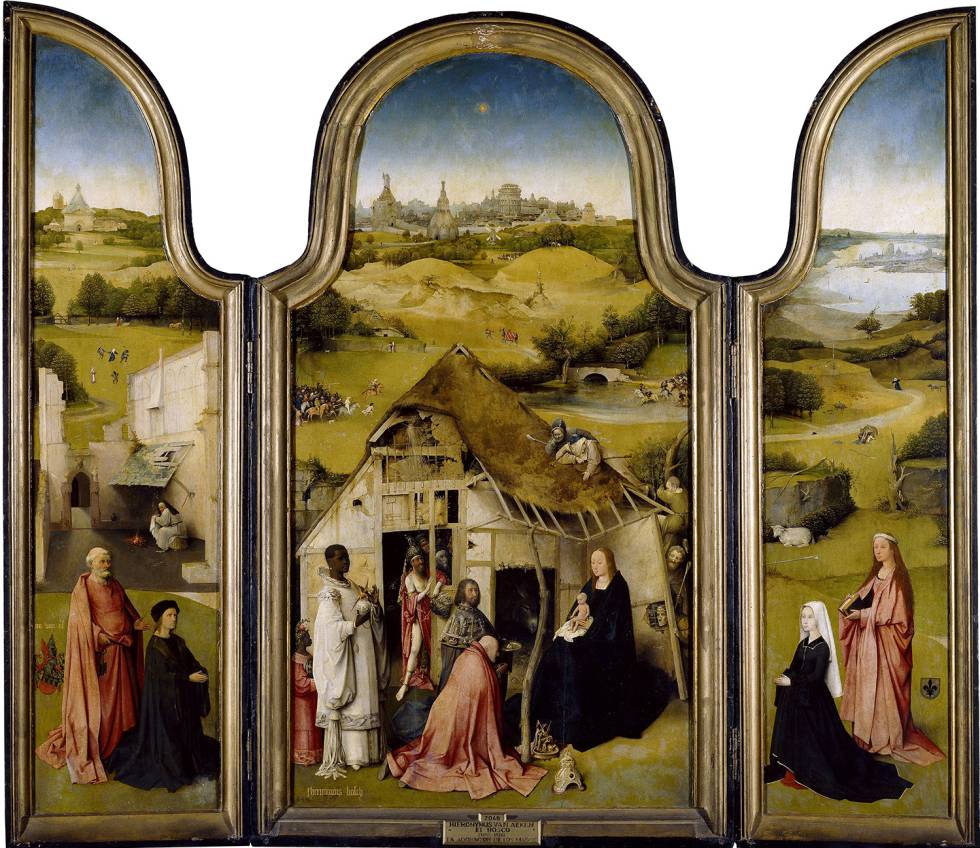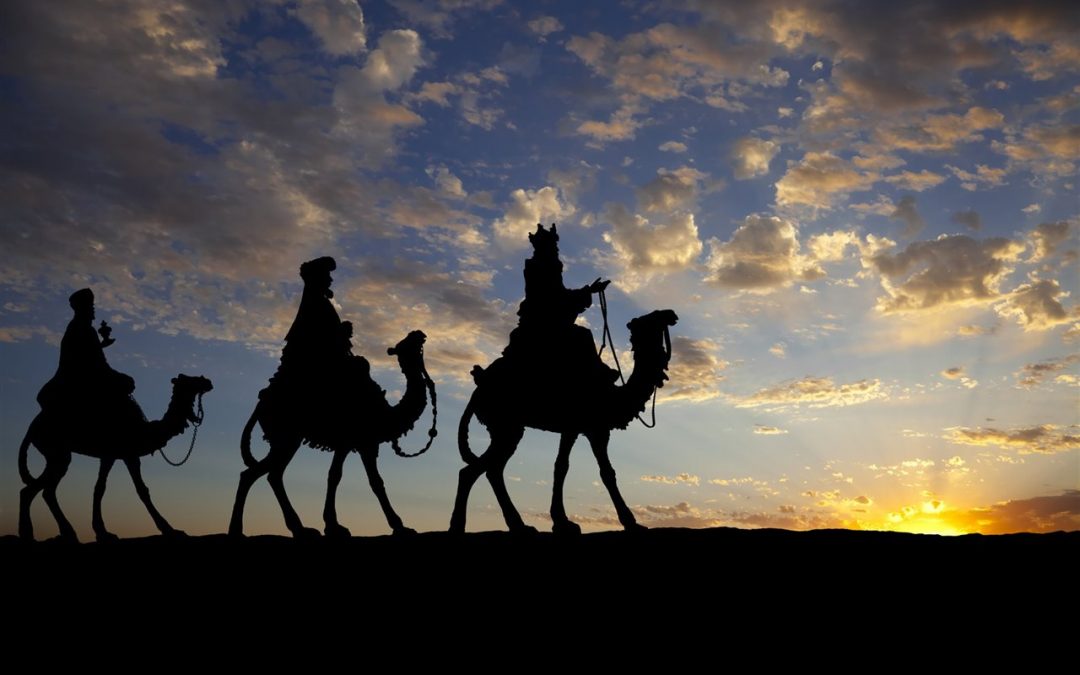Young and old are looking forward to the magical night of January 5, but few know the origin of this wonderful tradition that has lasted to this day and that every year arrives loaded with gifts and illusions.
January 5 is a night in which children's hearts beat rapidly and when they close their eyes they dream with hope that the Three Wise Men from the East will bring them the desired gifts. They hope that the letter they sent so long ago with the heading "Dear Three Wise Men, Melchior, Gaspar and Baltasar" reaches its addressee without problems. The little ones are so excited and nervous that, in the silence of the night, from thinking about them so much, they seem to hear the sound of their footsteps and the touch of their silk robes in the corridors.
A brief piece of news from the evangelist Mateo is the origin of a tradition that has inspired magnificent works of art. The so-called Magi from the East were not given names or crowned kings until the 6th century. Year after year, wise men and doctors of the Church then completed the story that every January 5 reveals millions of children.
THEY WERE MAGICIANS And they came from the East, following the course of a mysterious star. They arrived in Bethlehem and offered the Child three gifts: gold, frankincense and myrrh, and they returned very happy to their distant country. (Upon reaching Jerusalem they had met with King Herod, but on their return they avoided him. And Herod, suspicious and enraged, ordered his soldiers to kill all the children under two years of age in Bethlehem. But from there they had already left. Jesus and his parents have gone, warned in time by an angel, on their way to Egypt).
That is all that the evangelist Matthew tells about them. Luke does not even mention them and only relates the adoration of the shepherds. From those first news, the legend was expanded and in popular tradition it survived, augmented with a mythical halo, adding new details to the brief scene of the adoration of the Magi. The evangelist does not say how many they were, or what they were called, or what their magic was, or from what mysterious East they came. (Were they Persians, Chaldeans, or Arabs?) Wiser and more precise, in the third century, Origen writes that there were three, and Tertullian affirms that all three were kings, and a little later their names are already disclosed: Gaspar, Melchior and Baltasar. It did not take long for the day of the Epiphany in Bethlehem to be fixed: January 6, the winter solstice in Egypt. (12 days before the Nativity, December 25. It seems that they traveled quickly, perhaps on hurried camels, from the mysterious East to Judea).

Illi Magi three reges dicuntur. "Those three magi are called kings," writes Cesáreo de Arles in the sixth century. At that time we see them in a brilliant mosaic of Saint Apollinare New in Ravenna: the three of them wear the robes of Iranian magicians (they wear a Phrygian cap and typical oriental hose), their names are already written on their figures and they advance one after another, happily carrying their three gifts to the Child Jesus. They did not take long to reappear definitively as kings, with sumptuous dresses and golden crowns. At that time, the name "magician" raised suspicions, and magic, black or white, was a suspicious practice; so, supported by a biblical prophecy from Isaiah, the wise men were promoted to kings. The Epiphany thus accentuates its symbolism: the rich monarchs humble themselves before the Divine Child and her parents in the humble manger.
The legend, amplified by learned interpretations of wise clerics, has its best compendium in the Legenda aurea, by Jacobo de la Vorágine, in the middle of the 13th century. There a barrage of comments is collected and ordered that explains its symbolic aspects. The three gifts come to express the triple nature of the newborn: gold was for the king, myrrh for man, incense for the god. And the three kings represent the three biblical tribes of Shem, Ham, and Japheth (that is, Asia, Europe, and Africa). The allegorical glosses are reflected in thousands of paintings and images, since Christian iconography makes the scene one of its favorite motifs. There are significant new details: the kings are of different ages. The first is an old man with a white beard, the second is middle-aged with a black beard, and the third is a young bearded man. And a new one that becomes enduring: of the three, one turns out to be black (perhaps because of his Ethiopian ancestry).
The Magi still had a second pilgrim journey after death. It is said that after returning from Bethlehem to their countries, they died there and were buried in the distant and fabulous city of Saba. After a few centuries, a pious lady and accredited discoverer of relics, Saint Helena, mother of the Emperor Constantine, came to unearth his bones and with imperial support she took them to Constantinople. From there Eustorgio, bishop of Milan, managed to rescue them, who transferred the three in a sarcophagus to his diocese. A few centuries later, taking advantage of the sacking of the city by the German emperor Frederick Barbarossa around 1164, the Archbishop of Colonia Reinaldo de Dassel skillfully managed to seize the venerable royal remains and transport them, on a risky journey, to his city. On the banks of the Rhine they would finally rest, like gleaming relics, worshiped like great treasure in a golden chest. And to its greatest glory the great Cologne Cathedral began to be built.
In the 13th century, Jacobo de la Vorágine collected the comments that explain the symbolic aspects of the Magi
By housing the then famous relics, the church gained enormous prestige and became a center for many pilgrimages. Thousands of pilgrims from Italy, France, Germany and Scandinavia flocked to worship the ancient worshipers there, fascinated by the magic of their holy relics, housed in the heart of Christian Europe. The Magi travelers were exalted as protectors of passers-by and pilgrims. And although not officially sanctified, many were baptized with their names. His images and festivals multiplied in countless cities, churches and sanctuaries to the furthest reaches of Europe. (Even in a convent on Mount Athos grains of myrrh were worshiped and offered to the child in Bethlehem).
The adoration of the Kings, which was a favorite pictorial motif of the Middle Ages, reached magnificent splendor and diffusion in the hands of the great painters of the Renaissance period: Masaccio, Fra Angelico, Gozzoli, Botticelli, in Italy; Van der Weyden, Memling, El Bosco and Rubens, in Flanders, and El Greco, Velázquez and others, in Spain. A great Christian mythological picture: three kings in golden costumes and exotic retinues come to kneel before the picturesque and humble stable of Bethlehem.
As you can see, the Magi have had a fabulous survival. From the brief evangelical news, they were gaining figure and name and became dazzling kings. Today his images endure more thanks to art than to religious worship. They survive as kind ghosts in the illusions and childhood dreams of Twelfth Night. In a picturesque way, in parades and costumes of the carnival and popular festival on January 5.



